This year took National Parks Traveler contributors to parks – near and far, big and small – that showcase the diversity and history of our planet.
The Traveler took readers to Chile, Portugal, and Tanzania. A little closer to home, follow a daring journey into Wrangell-St. Elias National Park in Alaska, which, at 13.2 million acres, is the largest national park in the United States, or tag along with Jim Stratton on his trip to smaller, lesser-known units of the National Park System.
We also offer itineraries for exploring some of the country’s more popular parks, like Acadia, Grand Teton, Canyonlands, Badlands, and Mount Rainier.
Maybe these articles will inspire your next trip.
Big Hole And Little Bighorn Battlefields: Thoughts On Cultural Tolerance And Understanding
By Jim Stratton
You can easily spend most of the day at Little Bighorn. Ranger-led talks are available, and we listened to one while eating our lunch at a nice covered patio next to the visitor center. We ended our visit at the memorial to Sioux and Cheyenne warriors whose actions at Little Bighorn are summed up by Wooden Leg, a Cheyenne warrior: “We had killed soldiers that had come to kill us.”
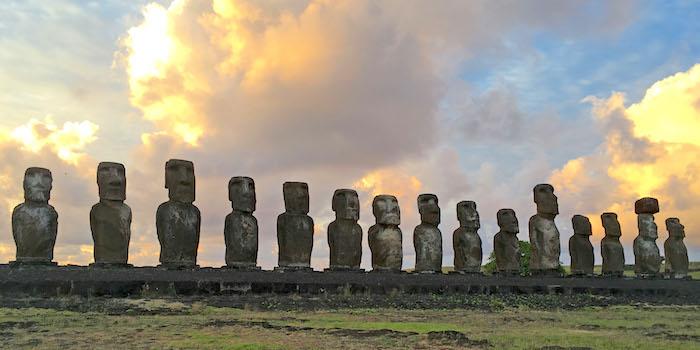
Moais on ahus at sunrise at Rapa Nui National Park / Danny Bernstein
Rapa Nui National Park, Isolated And Fascinating
By Danny Bernstein
Almost all the moais came from one quarry, Rano Raraku, a volcanic crater. Each moai was carved right out of the crater and came out as a fully realized statue, except for the top hat. Legend tells us that the moais “walked” to their destination. They were transported most probably by a series of rollers and ropes. Another quarry, Puna Pau, produced the top hats, (pukao), which were put on the moais at their final destination.
Seeking Winter Solitude In Grand Teton National Park
By Fred Swanson
Today we were venturing off the groomed track, but we hadn’t reckoned on the icy forest trails, which made the slightest incline seem like a physics experiment in frictionless acceleration. A little of that and we headed down to the frozen shoreline of Jackson Lake, which held a thin skiff of new snow. It also gave us a superlative view of Mt. Moran and the peaks leading south to Grand Teton itself. The morning stratus deck was lifting, revealing the high peaks clothed in their winter mantle. Cold hands fumbled with cameras, but mostly we smiled and took in the view.
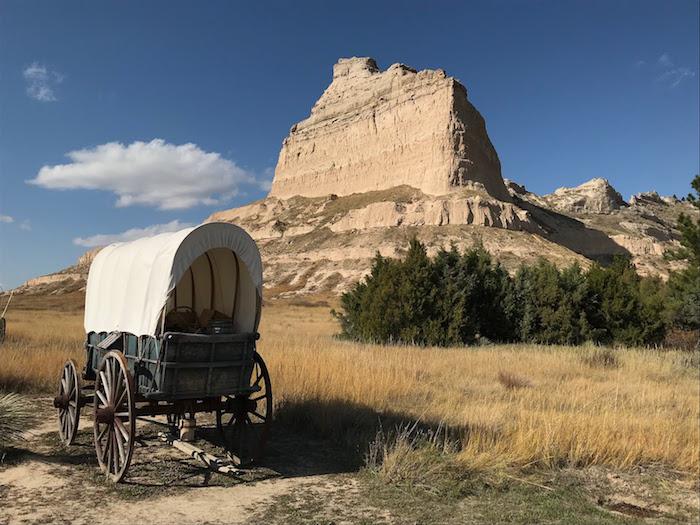
Scotts Bluff National Monument in western Nebraska is surrounded by other monuments chronicling frontier life / Jim Stratton
Scotts Bluff And Fort Laramie: Is The Oregon Trail In Your Family History?
By Jim Stratton
Do not miss the upstairs of the cavalry barracks where the men slept and stored their gear. It is fully restored down to the names of the soldiers above the beds, and each man’s equipment hanging off the wall and stored around the room. It is like walking back in time. We spent several hours going through all the buildings, which are refurnished with period furniture and household items. The Park Service has done a fabulous job of making the fort look like it did 130 years ago.
Peneda-Gerês National Park: Time Travel To The North Of Portugal
By Rita Beamish
Hiking in this national park (typically just called Gerês) is more of a time-travel experience than a wilderness foray. Its 270 square miles bend across northern Portugal, snug against the Spanish border. Medieval, and even prehistoric, features are interspersed with backcountry and other uses, including boating and horseback riding, farming and livestock breeding. We at times encountered a clatch of cattle or sheep wrangled by a herder wielding a stick. From high vistas the red-roofed villages—tiny clusters of stone habitations—seemed the very antithesis of modernity, without commercial eateries, coffee shops, or retail of any kind.
Sunset Crater Volcano And Capulin Volcano: Discovering Lava In The Southwest
By Jim Stratton
One can only imagine what it must have been like to wake up one morning to a volcano erupting a couple dozen miles away, raining ash on you and your crops and home. After the eruptions, people moved back into the region and started farming again on soils that were enriched from volcanic ash. But as with many of the native peoples in the southwest, they had permanently moved on by 1250 or so, leaving only their homes behind.
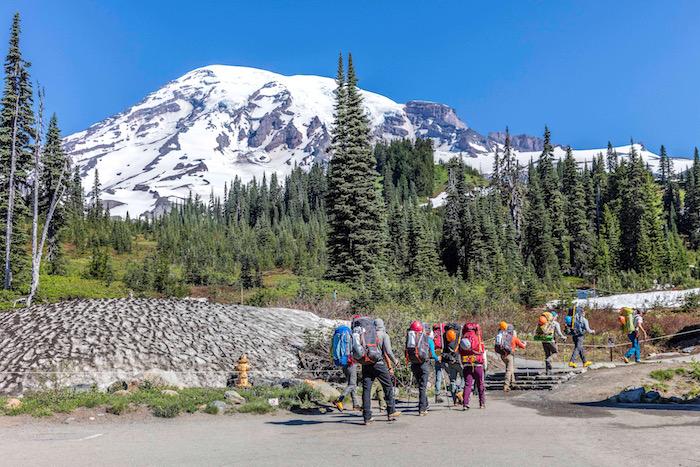
Some come to gaze at Mount Rainier, others come to climb it / Rebecca Latson
3 Days In Mount Rainier National Park
By Rebecca Latson
Without a doubt, the most popular trail in Paradise is Skyline Trail. Start a clockwise circuit of this 5.5-mile loop that will lead you to side trails (Alta Vista and Glacier Vista) with imposing views of Nisqually Glacier, Mount Rainier, and mountain valleys with silver waterfalls. Continue up to the all-encompassing view of Panorama Point. On a clear day, you’ll see the tiny speck of Paradise Inn below, the Tatoosh Mountains in the background, and Mount Adams, Mount Saint Helens, and possibly Mount Hood far beyond.
Fort Bowie National Historic Site: Conflicts With The Apache
By Jim Stratton
No complete buildings remain, but walls for most of the 38 structures standing when the fort closed have been preserved, and they give you a good sense of how the fort was laid out. Each building is well-interpreted along the pathway that winds through the fort site. I was not expecting to see photos of the officer’s quarters, which graphically illustrated that being an officer was WAY more comfortable than being an enlisted man. These homes looked like they could have been in any large city in America, not out in the middle of the Arizona desert.

Moonrise over Castle Mountains National Monument / Jim Stratton
Mojave National Preserve And Castle Mountain National Monument: California’s Desert At Its Finest
By Jim Stratton
As the afternoon merged into evening, a full moon rose above the craggy peaks, and the evening light lit the rocks with pastel blues, reds and purples. I have to say it was “sparktacular.” I was especially surprised to see a thick blanket of grass growing across the landscape. One expects the desert to be sand and cactus, so these native desert grasses seemed out of place, but David assured me this is one of the things that makes the California desert so unique. The evening light reflecting off those grasses made for especially fine photographs.
Exploring Canyonlands National Park In Spring: A Primer
By Kurt Repanshek
It is both an incredibly alluring, and brutally demanding, and occasionally deadly, landscape. They call it "Canyonlands" National Park, but it's more than just canyons. There are plateaus and grabens -- curious landscapes that have sunk as if on an elevator going down while the surrounding landscape remains in place -- narrow passageways through rock, meadows, and buttes that tower above the Colorado and Green rivers as they flow through this arid place.
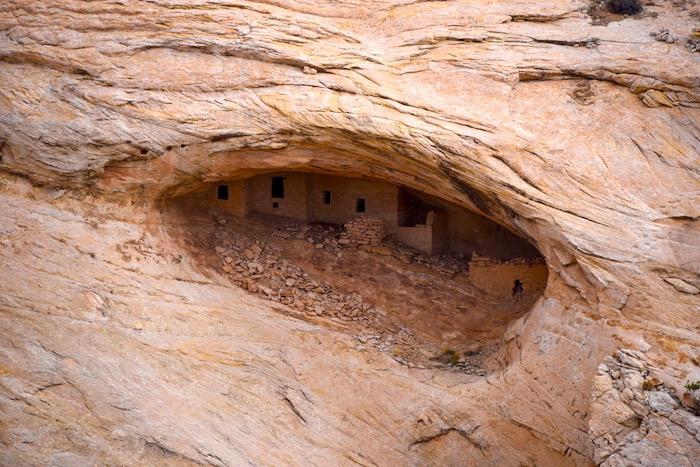
The Eagles Nest Ruin, Bears Ears National Monument / John Miles
Bears Ears National Monument: A Museum Of Antiquities And Natural Beauty
By John Miles
Rounding a corner, I saw a large south-facing alcove in the canyon wall, ruins of an ancient cliff dwelling tucked into it. We poked around, marveling at the masonry, imagining what life must have been like when the Old Ones lived here 800 to 900 years ago. Carved on a rock we found an inscription – 1892 COLD SPRING CAVE I.A.E.E. One-hundred-twenty-six years before our visit, the Illustrated American Exploring Expedition had climbed up here. They were mapping sites, not digging, but others came to dig, some just pot hunting, others studying the archaeology. All of the half-dozen extensive cliff dwellings we visited had been disturbed during the century since those initial visitors from Ohio investigated this place.
Musings From Cesar E. Chavez National Monument
By Lee Dalton
Somehow I was surprised to find this place in such a beautiful and serene setting. I guess I was expecting that it would be in a flat bean field or orchard down in the Central Valley. I can certainly understand why Señor Chavez chose a place like this where he could find respite from his struggles and the hate he had to endure.
Fredericksburg, Petersburg, & Richmond: Experiencing Civil War Battlefields
By Jim Stratton
There are driving guides to the four Fredericksburg battles and we spent the best part of a day exploring them all. Be sure and spend some time at the Chancellorsville visitor center and take the short walk to where General Stonewall Jackson, in the confusion of the battle, was mortally wounded by his own soldiers. Take the time to walk some of the fields where union and confederate soldiers crashed into each other. Look at the battles from the artillery perspective. The Park Service has placed cannons in many places to help us imagine how integral they were to winning some of these fights. It’s all there for you to check out, so be sure and give yourself enough time.
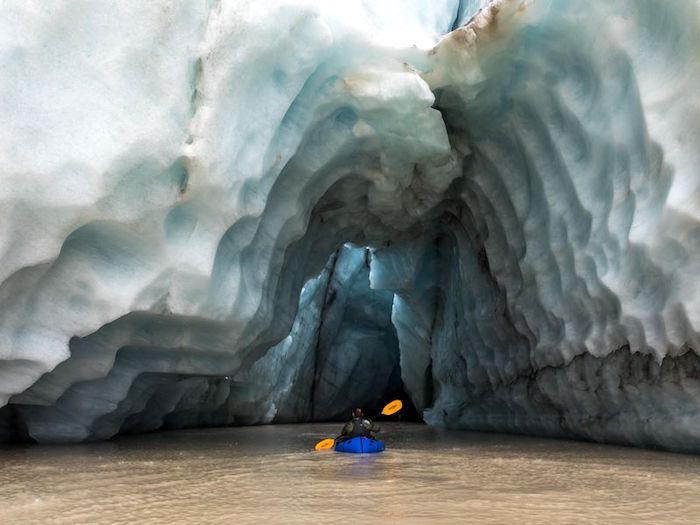
Nizina Glacier became more accessible to paddlers around 2000, when melting ice formed a lake on which float-planes could land / Nathaniel Wilder
A Daring Journey Into The Big Unknown Of America’s Largest National Park
By Mark Jenkins
I’d come here to Wrangell-St. Elias National Park and Preserve to experience its spectacular environment, a vast mountainous terrain dominated by glaciers and riven with furious meltwater. I’d heard that the whole landscape was being profoundly altered by warming temperatures and accelerated melting, but I thought the signs would be more subtle. I didn’t expect to be knocked off my feet and nearly drowned by climate change.
Musings From Manzanar National Historic Site
By Lee Dalton
One of the most moving exhibits is that collection of watercolor portraits of people who were interned here. One stood out to me. Jack Kunitami wearing an American Legion cap and his words: “I did my share. I had complete faith in America.” As they were loaded into trucks for transport, internees could take only what they could carry. A mother named Fumiko Hamashida wrote: “My suitcase was full of diapers and children’s clothes.”
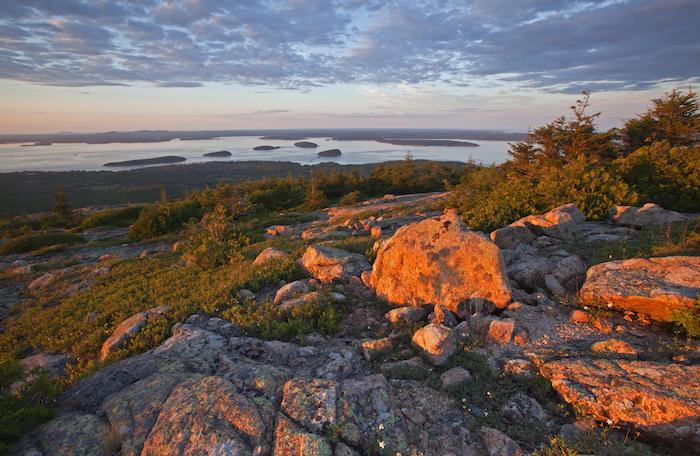
The Porcupine Islands are anchored in Frenchman Bay to the east of Bar Harbor / Colleen Miniuk-Sperry
3 Days In "The Place," Acadia National Park
By Colleen Miniuk-Sperry
Acquaint yourself with Acadia’s flora, especially such summer wildflowers as blue flag iris, pitcher plant, and aster, by sauntering through the Wild Gardens of Acadia. Then stretch your legs on the Jesup Path on the west side of the garden. Here you can see the differences in growth before and after the “Great Fire of 1947,” with the surviving hemlocks on the west side of the boardwalk contrasting with the newer birch maples, and other deciduous trees on the east side.
Walking The Cades Cove Loop Without Vehicles At Great Smoky Mountains National Park
By Danny Bernstein
I set out at 6 a.m., just as it gets light, parking outside the beginning of the loop road. The orientation shelter is empty, though you can still buy a Cades Cove Tour pamphlet for a dollar on the honor system. Since I was going to take several hours to walk, I took my daypack with water, snacks and a raincoat. For a glorious 15 minutes, I had the cove to myself. No park staff, no volunteers, no bikers – just me. When the first two bikes come through and were about to pass me, I stopped them and asked if they would take my picture in the empty Cove. What are the chances of this happening ever again?

The view from the Kneeling Camel Overlook on the North Rim of Black Canyon of the Gunnison / Kellie Chidester
24 Hours On The North Rim Of Black Canyon Of The Gunnison National Park
By Flint Shoop
We scrambled down the dirt-and-rock trail eager to catch our first glimpse. Heights have never bothered us in our travels, but as we walked toward the fence at the first Chasm View, something began to happen to our bodies. The cooler air rising from the river far below greeted us at about the same time as the churning sound of the river. As our hands reached out to the fence railing and we peered over the edge to the bottom, our stomachs tightened and our knees grew weak. Even as we leaned forward, our hands’ grip on the rail tightened, and we had to believe that most visitors couldn’t help but feel a sinking sensation from the sheer height or depth of the canyon whose vertical walls drop straight down toward the river.
Tuzigoot And Montezuma’s Castle: Ancient Cultures In A Fertile Arizona River Valley
By Jim Stratton
But the really cool site at Montezuma Castle is not the Castle. It is Montezuma Well, a short 11-mile drive to the north. The well is a naturally occurring sinkhole filled with 15 million gallons of water. Local Native American people consider this a sacred site and a place of origin. Think of the well as a limestone bowl 130 yards across and filled about halfway. You stand on the rim of the bowl and look down into the small lake that is the well. I have seen other limestone sinkholes, but one filled with so much water is not a sight one expects in the desert.
Exploring The Parks: Fort Necessity And Friendship Hill
By Jim Stratton
The Park Service has re-created the fort so you can walk around the circular stockade and marvel at its small size and see, first hand, how close the enemy was able to approach the fort from the surrounding forest. It turns out building a fort in the middle of a marshy meadow closely surrounded by forest is not the best defensive strategy. It is easy to see why the French won. Attacking Fort Necessity was like shooting fish in a barrel.
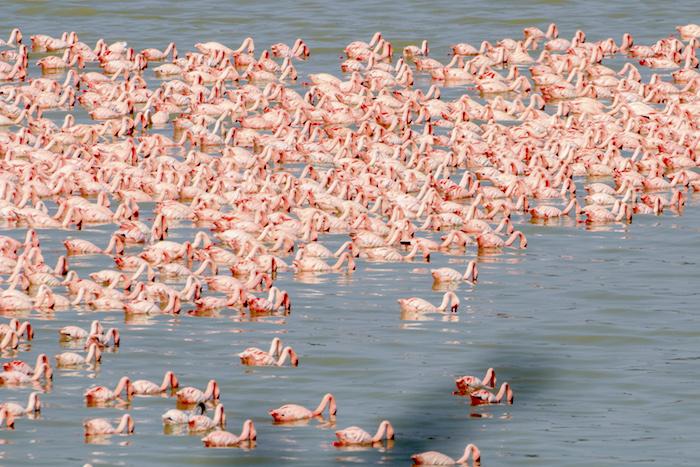
In Tanzania, the pink flamingos are not lawn ornaments / Mark Hendricks
The Short, Happy Life Of A Self-Drive Safari Goer
By Mark Hendricks
Tarangire National Park is most famous for elephants and its high concentration of ancient baobab trees. Warthog, impala, and Thompson’s gazelle abound. Hornbills perch on acacia trees, ostrich frolic on the dry land, and lilac-breasted rollers take to the sky. We camped in the most beautiful site where I have ever pitched a tent; a primitive site surrounded by baobab trees. At dusk, a large flock of lovebirds roosted above us and two wildebeests ventured past our vehicle.
A Good Drive Through The Badlands
By Kurt Repanshek
Jewel Cave National Monument, Badlands National Park, Wind Cave National Park, and Mount Rushmore National Memorial are all within an hour's drive from Rapid City. They alone will easily justify your spending a week’s vacation exploring these parks. Toss in the Crazy Horse Memorial and Custer State Park and 10 days or more wouldn’t be too short for an exploration of this landscape, both above and below ground level.
The Lock And Dam Bring A New Perspective To An Old River
By Patrick Cone
St. Anthony Falls is the only major cataract along the Mississippi River’s 2,320-mile journey, pouring over a limestone shelf and dropping 50 feet. In fact, this drop accounts for 10 percent of the total height change of the Mississippi River between the Twin Cities and St. Louis. The river attracted pioneers, homesteaders and settlers, but it was the force of the falls that powered lumber mills, textile factories, and agricultural machinery, and later its electricity ran machinery and lighted the cities.
Exploring The Dune Shacks Of Peaked Hill Bars Historic District At Cape Cod National Seashore
By Kurt Repanshek
Roaming through this area of the national seashore can take you back, if you're imaginative, to the days before Route 6 was built down the cape in 1926 and greatly increased the human pressure on the landscape. For much of our hike we were alone with the breezes, birds, and waving vegetation. Trails you follow are those pounded into the sand by millions of visitors down through the decades. But you can venture off in just about any direction you want; just be careful around vegetation.
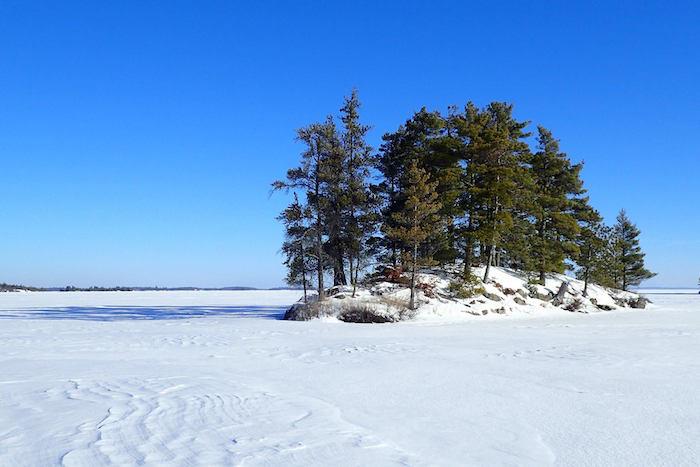
Winter often brings out the silent beauty of Voyageurs National Park / NPS
Experience Winter, Minnesota Style, At Voyageurs National Park
By Voyageurs National Park Association
Winter is a cold, snowy, and decidedly solitary season at Voyageurs National Park, where fellow visitors can be hard to spot. Take December 2017, for instance. The park recorded just 110 visitors, down from 196 a year earlier. But if you relish skimming through the woods on skis or snowmobiles, like to study tracks of what crossed the meadows and frozen ponds, or crave to see the dancing Northern Lights overhead, well, a visit to Voyageurs should be given serious consideration.



Comments
What a great collection of vignettes, each an obvious tease of a longer and deeper study of some of the best of the NPS.